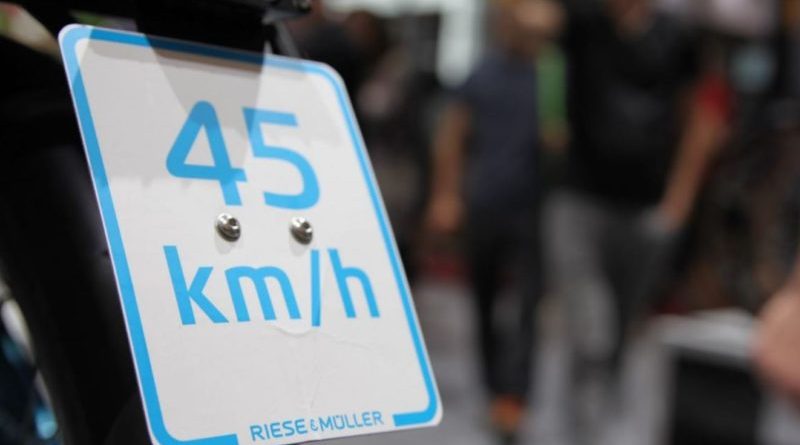Proposal made to EC for new zero emission vehicles category
European trade association LEVA-EU has further expanded upon earlier calls for a change in legislation surrounding certain types of electric bike and speed pedelecs, asking the European Commission to consider a new framework under the Zero Tailpipe Emission Vehicles (ZEVs) banner.
LEVA-EU defines a Zero Tailpipe Emission Vehicle as “a powered vehicle equipped with a motor that does not produce harmful tailpipe emissions”.
Such vehicles are currently subject to European legislation, Regulation 168/2013, which was originally designed to cover petrol engine mopeds and motorcycles, or to the Machinery Directive aimed at machines with the exclusion of vehicles.
LEVA-EU’s proposals include adding an article to Regulation 168/2013, excluding ZEVs with a maximum design speed not exceeding 50 km/h and to also exclude all ZEVs from the Machinery Directive.
As a result, this legal intervention would exclude all types of electric cycles, cargo-cycles, e-scooters, monowheels, e-hoverboards, self-balancing vehicles and any other Zero Tailpipe Emission Vehicle not yet mentioned explicitly in law today, from the current legal framework, which the trade body describes as “totally inappropriate and inaccurate.”
Instead, LEVA-EU proposes to transfer ZEVs into a new horizontal Vehicle Regulation. This European law would specify essential safety requirements, to be complemented with harmonised standards and possibly, for certain ZEV-categories, type-approval procedures. The exact shape of the legislative framework would likely be decided in consultation with the ZEV-sector, if the call for change were to be successful.
A position paper has now been submitted to the European Commission, within which a new way to regulate speed and a simple categorisation based on speed and weight only are detailed.
LEVA-EU Manager Annick Roetynck said bringing in the concept of Zero Emission Vehicles (ZEVs) would finally set them apart from vehicles such as petrol engine motorbikes and mopeds, when it comes to the lengthy, inaccurate legislation manufacturers must navigate.
She said: “The ZEV concept covers all light, electric vehicles and allows for much simpler, more accurate and future-proof rules. LEVA-EU has also submitted the paper to TRL in the framework of their ongoing study for the European Commission, into possible legislative reviews for the benefit of ZEVs. They will complete their study this month.”
“LEVA-EU insists that speed and weight limits must be set in consultation with the ZEV sector. Because the voice of the sector is drowned out by the voice of parties who consider ZEVs an existential threat, from which they must protect their business, the Commission has not yet entered into an in-depth dialogue with the sector. LEVA-EU calls on the Commission to no longer postpone that consultation.”
Furthermore, the document calls for investment in cycle paths, safer streets, extended bike highways well suited to longer distance speed pedelec travel and a new ZEV infrastructure categorisation to show which routes are best suited to the adapted law, if successful.
Flanders in Belgium is one of few European areas that raises no objection to speed pedelec use thanks to its ‘Category P’ regulation and as such has been one of few areas to return data on their usage and future viability as a transport form. In this study, user feedback was largely positive on the electric bike’s viability as a transport solution.
Current regulations class most light electric vehicles in the same category as petrol engine mopeds and motorbikes. This law, Regulation 168/2013, leaves manufacturers forced to navigate complicated and costly procedures, and presents considerable safety issues for riders.
LEVA-EU’s proposal for new legislation is based on kinetic energy, stating it believes that vehicles with the same kinetic energy must be subject to similar rules.
As an example, a pedal assisted bike 25 km/h – 250W develops exactly the same kinetic energy as that same vehicle with, for instance, 300W. However, the first is excluded from type-approval, comes under the Machinery Directive and has the same status as a conventional bicycle in all EU member states. The 300W edition is an L1e-A, needs type-approval and does not have a clear status in most member states. The first one is selling by the millions, the second one is virtually non-existing.
LEVA-EU also proposes some fundamental changes to the terms of use for ZEVs, including that speed limits by design must no longer be used to regulate traffic. Just as is the case for all other vehicles (except conventional mopeds), traffic speed must be regulated by local speed limitations decided by traffic management authorities.
The paper also urges the Commission to take an initiative aimed at organising consultation between member states on terms of use for ZEVs. Roetynck adds: “This will definitely contribute to raising awareness of member states on ZEVs as well as to exchanging best practice. That will, in turn speed up the adaptation of traffic rules and road infrastructure to ZEVs and allow them to realise their full potential, thus making a huge contribution to the objectives of the Green Deal.”
The full position paper on the review of Regulation 168/2013 is available here: https://bit.ly/36SrBwv.
The position paper on the review of the Machinery Directive is here: https://bit.ly/2Nc97Aj



